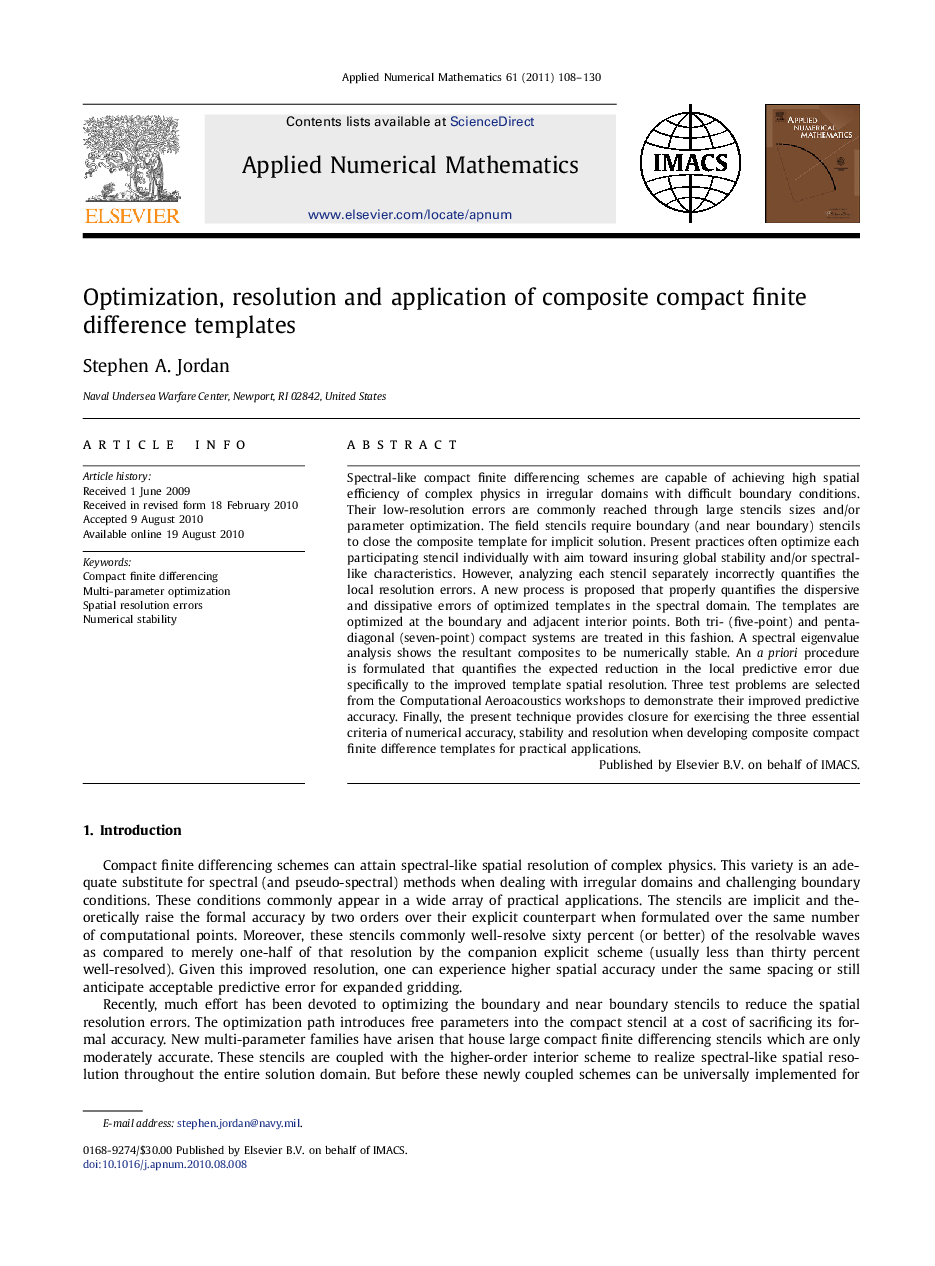| کد مقاله | کد نشریه | سال انتشار | مقاله انگلیسی | نسخه تمام متن |
|---|---|---|---|---|
| 4645583 | 1342046 | 2011 | 23 صفحه PDF | دانلود رایگان |

Spectral-like compact finite differencing schemes are capable of achieving high spatial efficiency of complex physics in irregular domains with difficult boundary conditions. Their low-resolution errors are commonly reached through large stencils sizes and/or parameter optimization. The field stencils require boundary (and near boundary) stencils to close the composite template for implicit solution. Present practices often optimize each participating stencil individually with aim toward insuring global stability and/or spectral-like characteristics. However, analyzing each stencil separately incorrectly quantifies the local resolution errors. A new process is proposed that properly quantifies the dispersive and dissipative errors of optimized templates in the spectral domain. The templates are optimized at the boundary and adjacent interior points. Both tri- (five-point) and penta-diagonal (seven-point) compact systems are treated in this fashion. A spectral eigenvalue analysis shows the resultant composites to be numerically stable. An a priori procedure is formulated that quantifies the expected reduction in the local predictive error due specifically to the improved template spatial resolution. Three test problems are selected from the Computational Aeroacoustics workshops to demonstrate their improved predictive accuracy. Finally, the present technique provides closure for exercising the three essential criteria of numerical accuracy, stability and resolution when developing composite compact finite difference templates for practical applications.
Journal: Applied Numerical Mathematics - Volume 61, Issue 1, January 2011, Pages 108-130